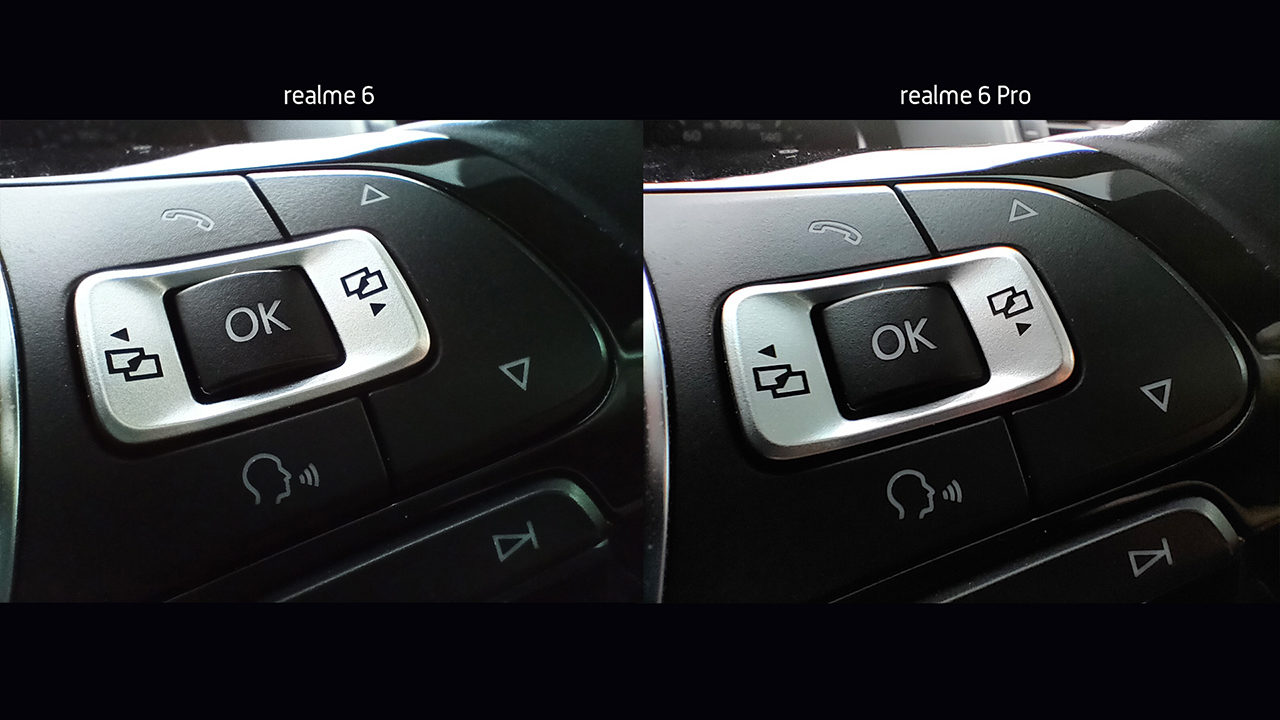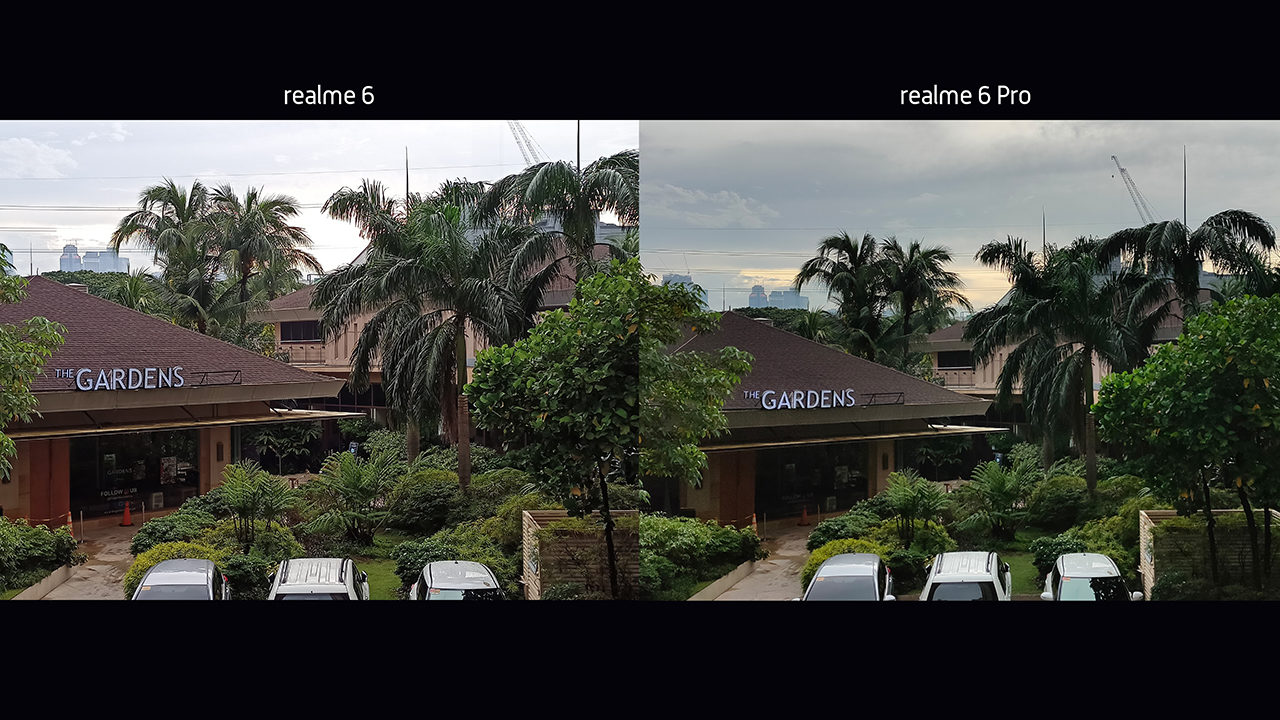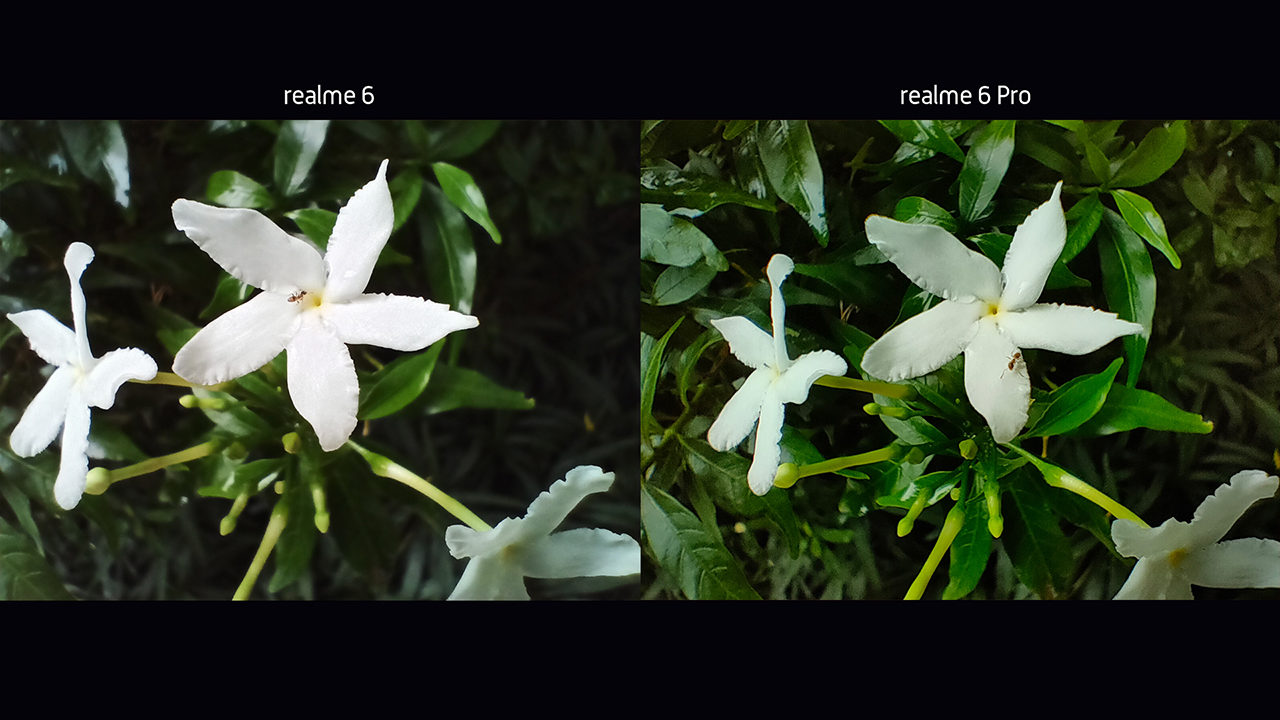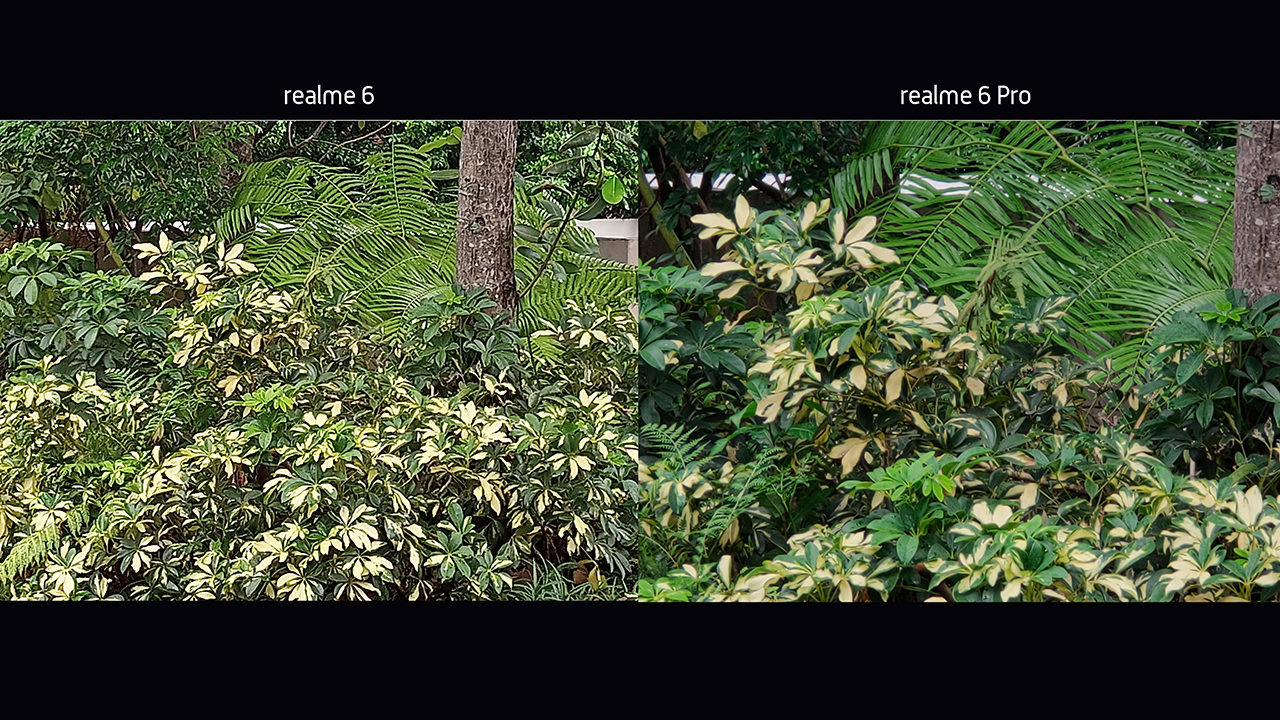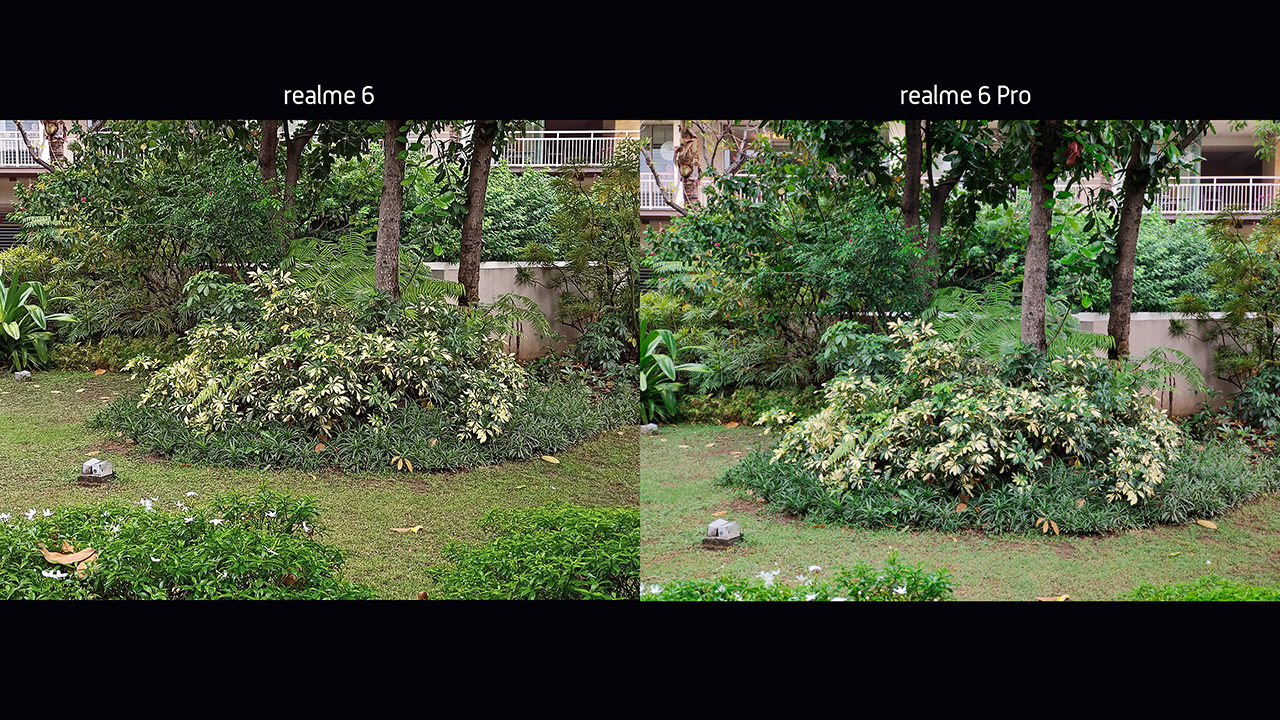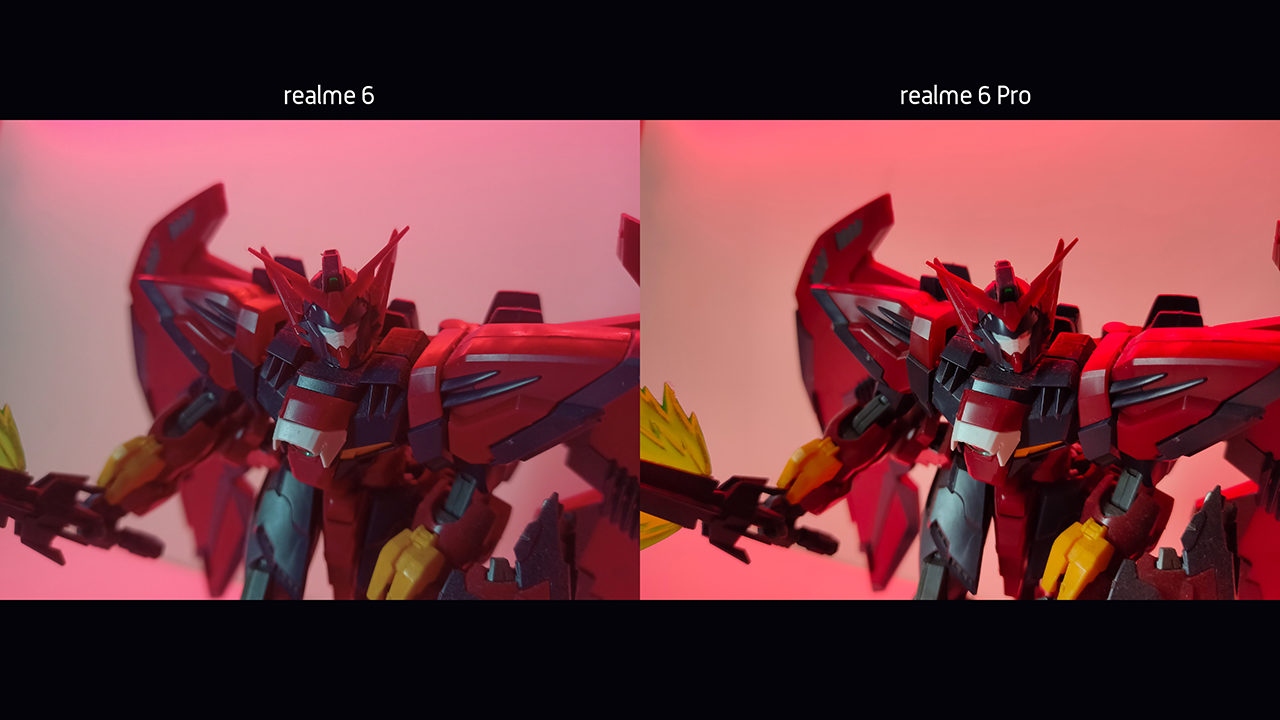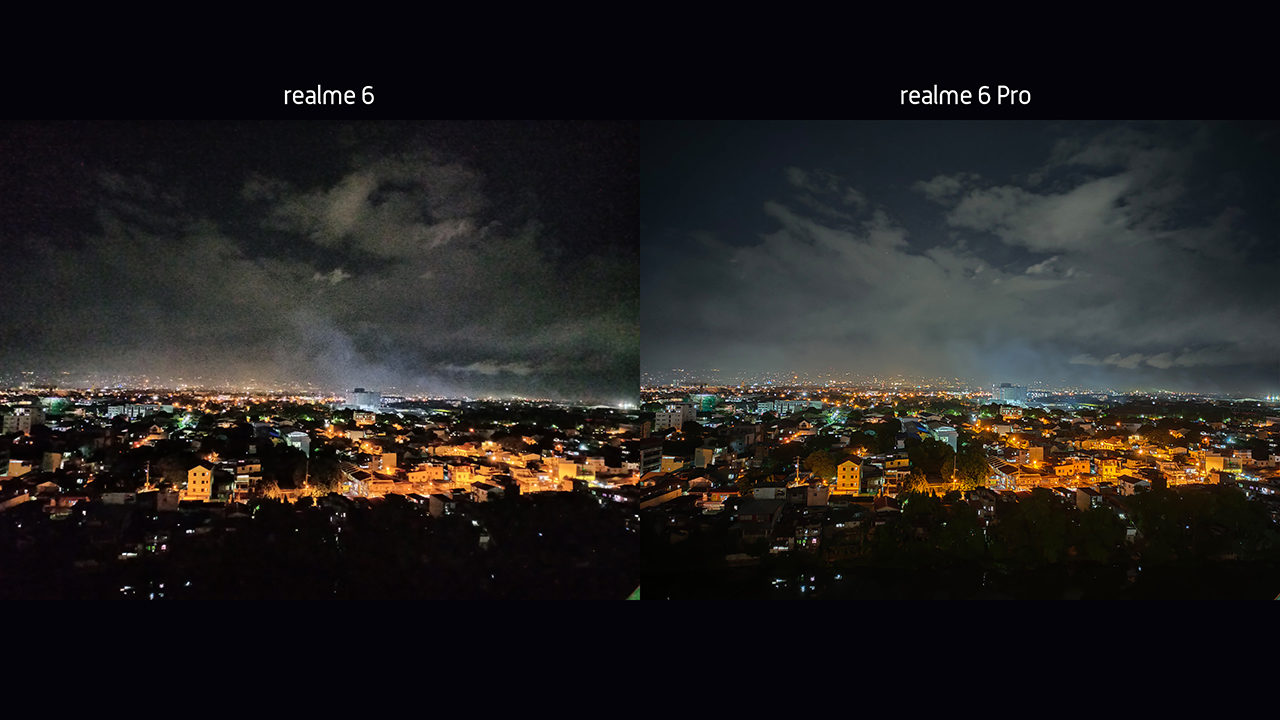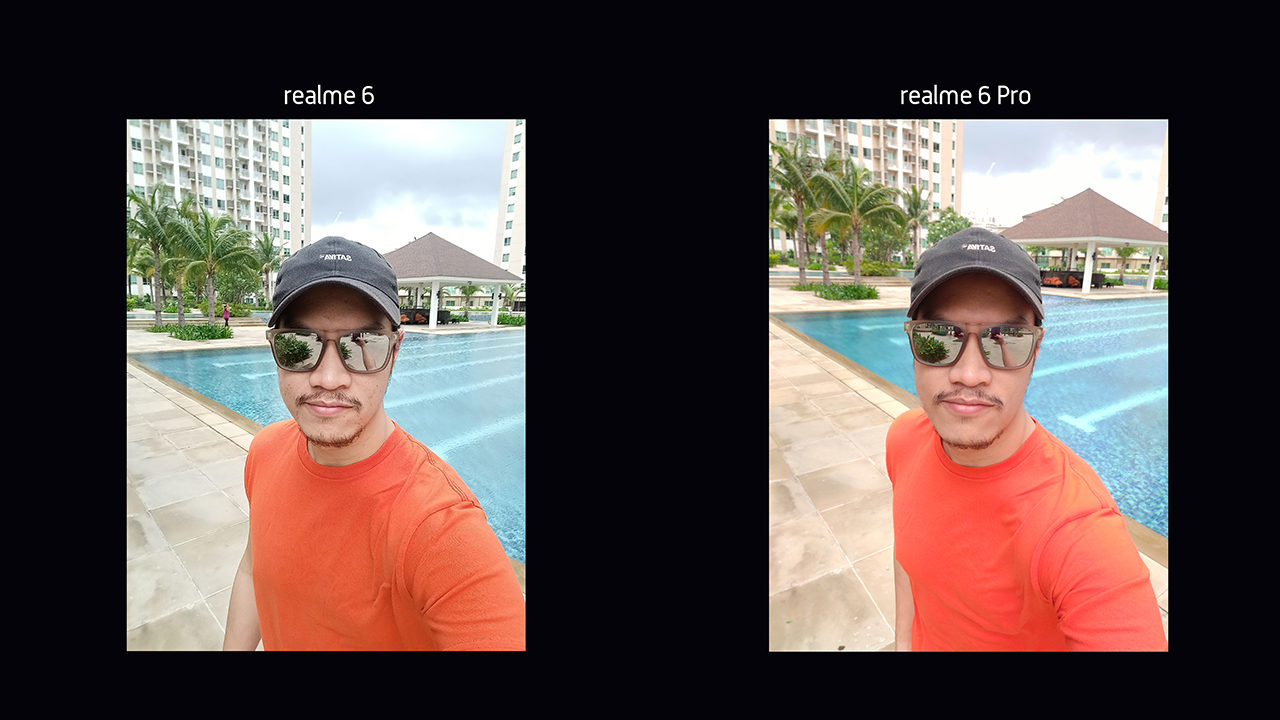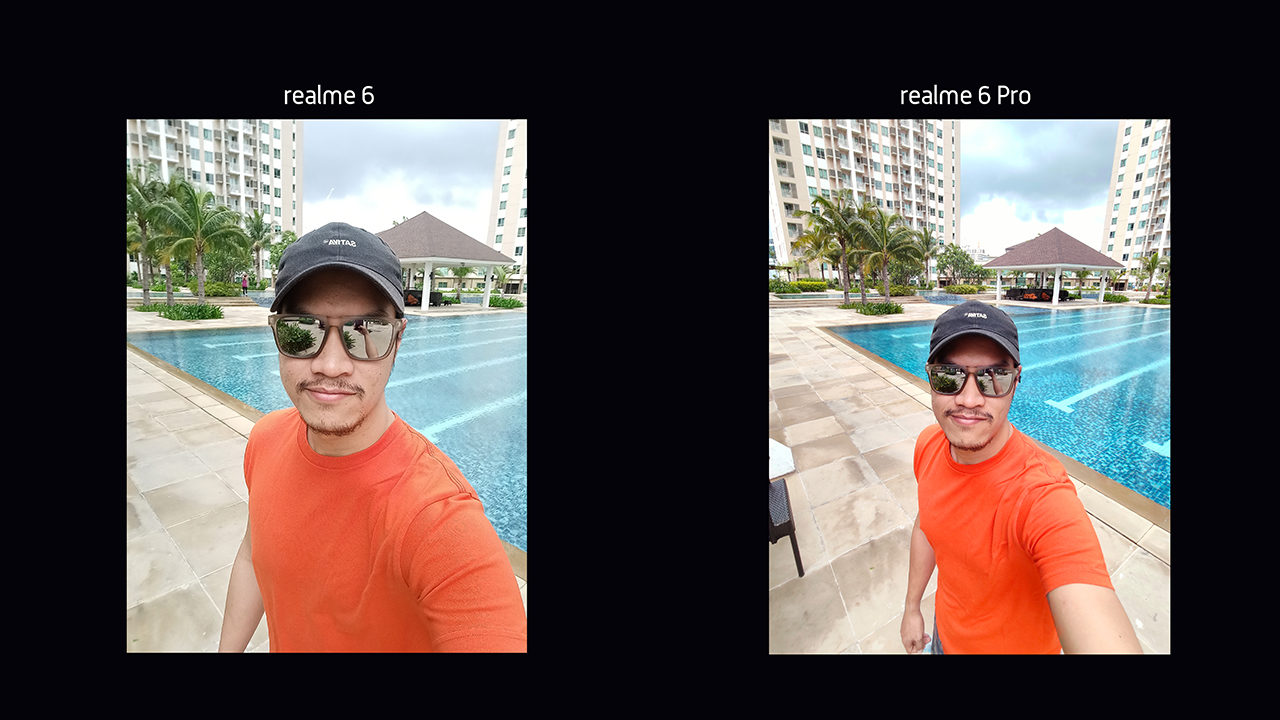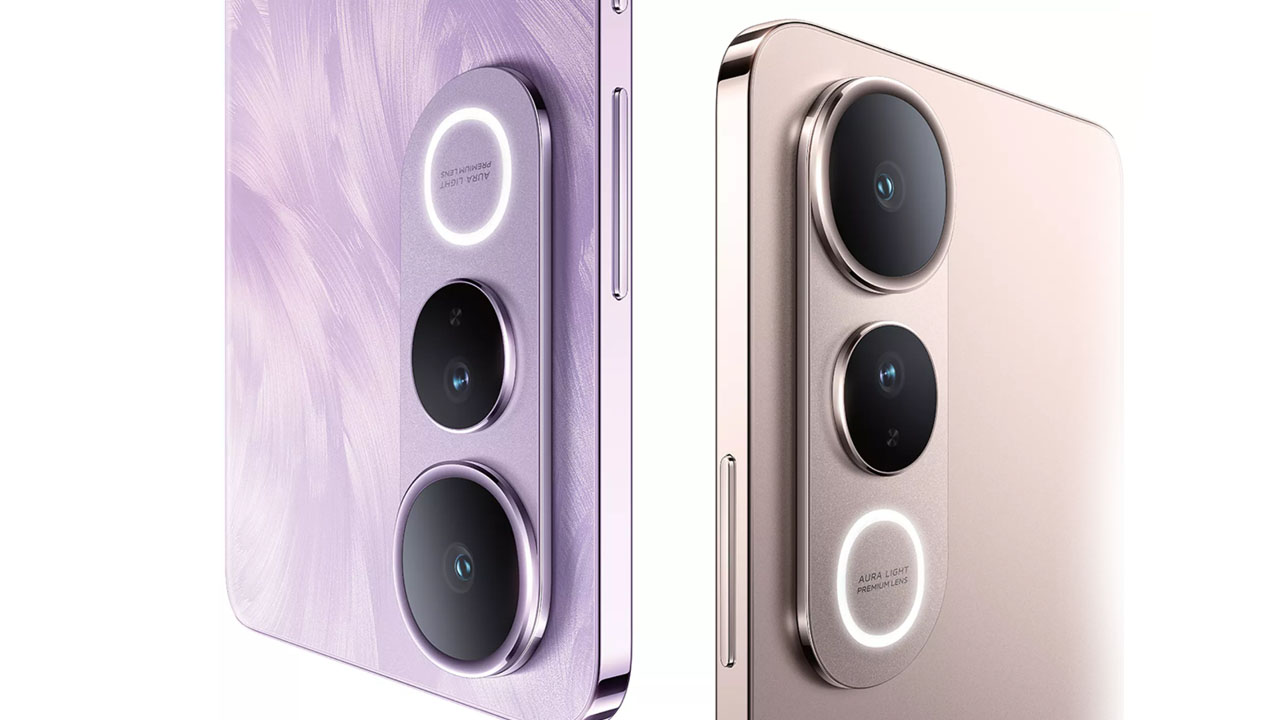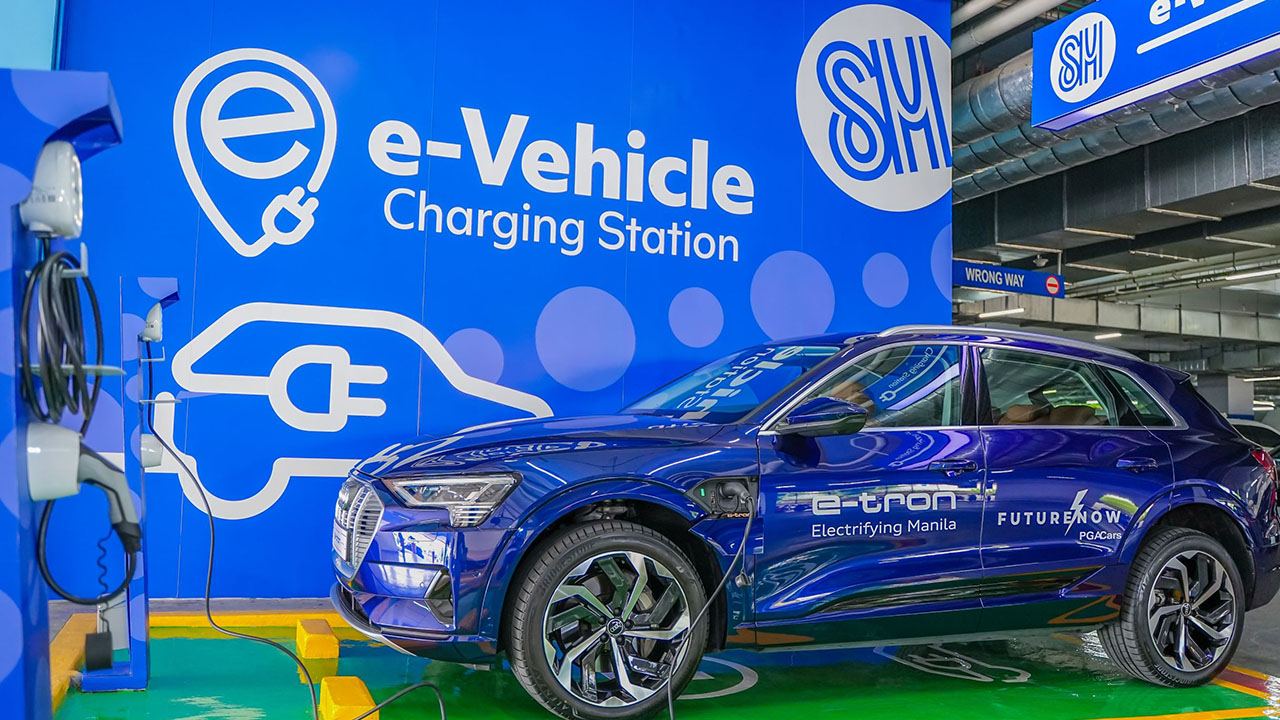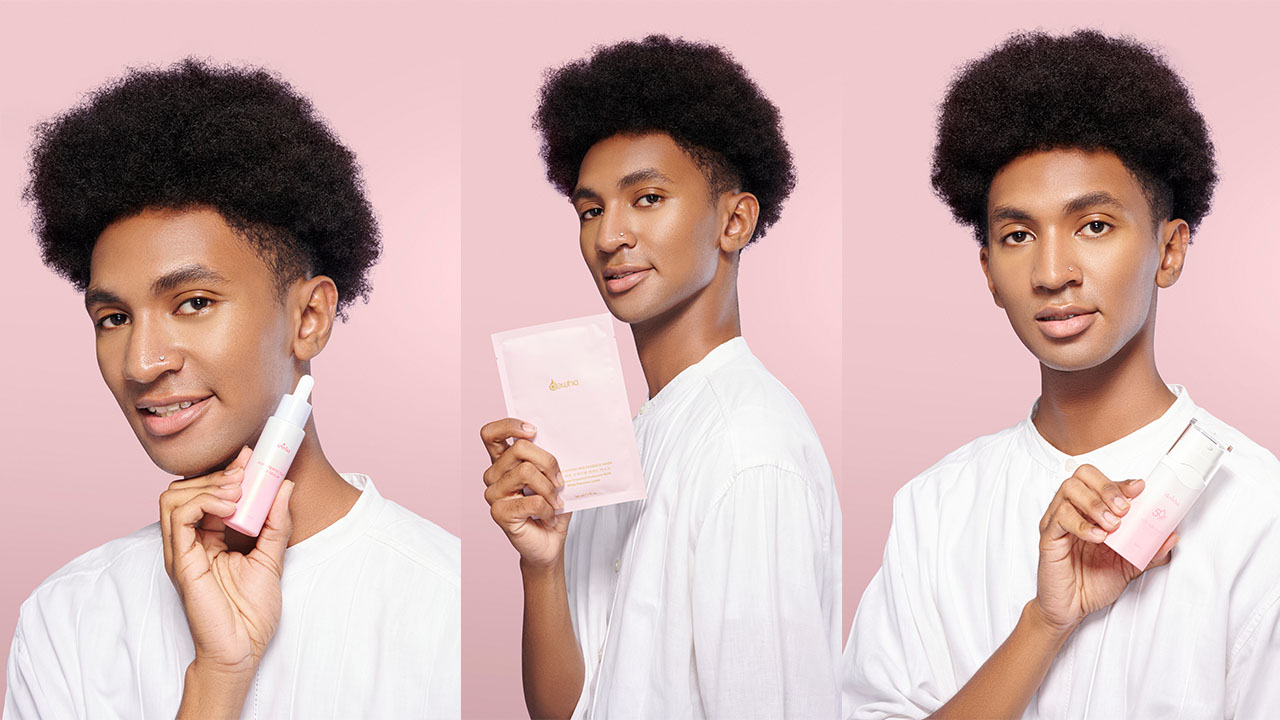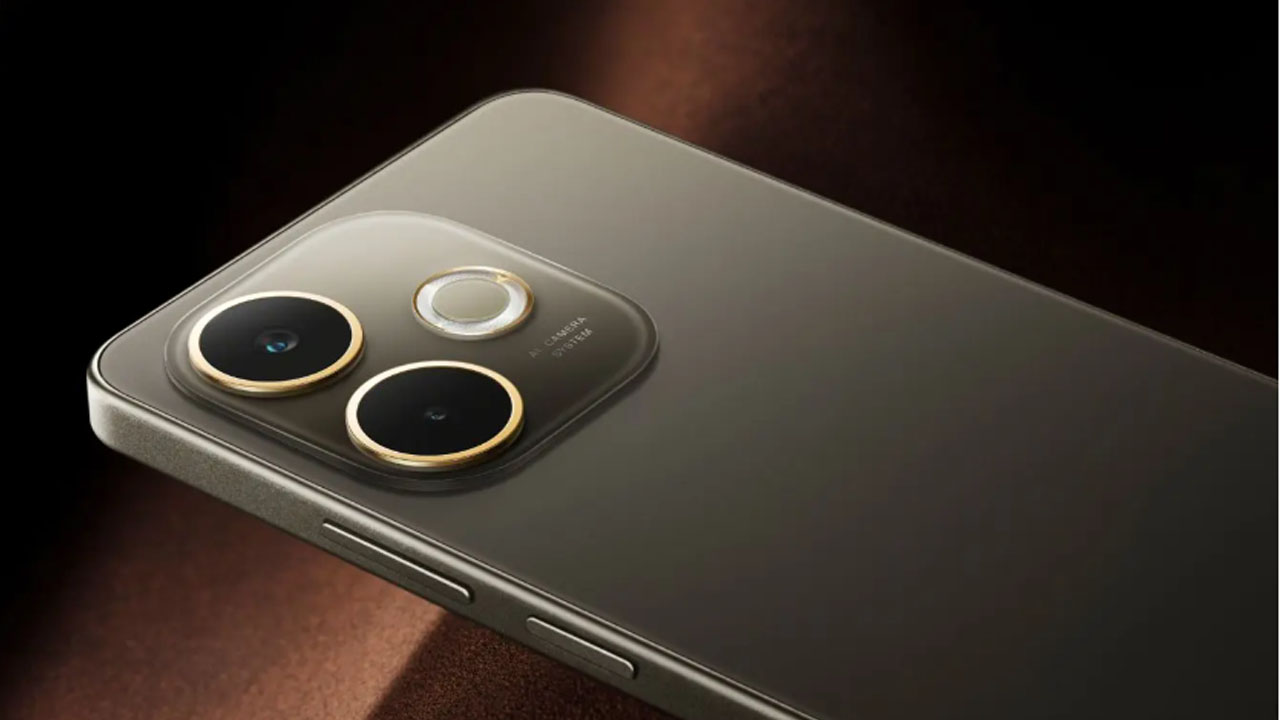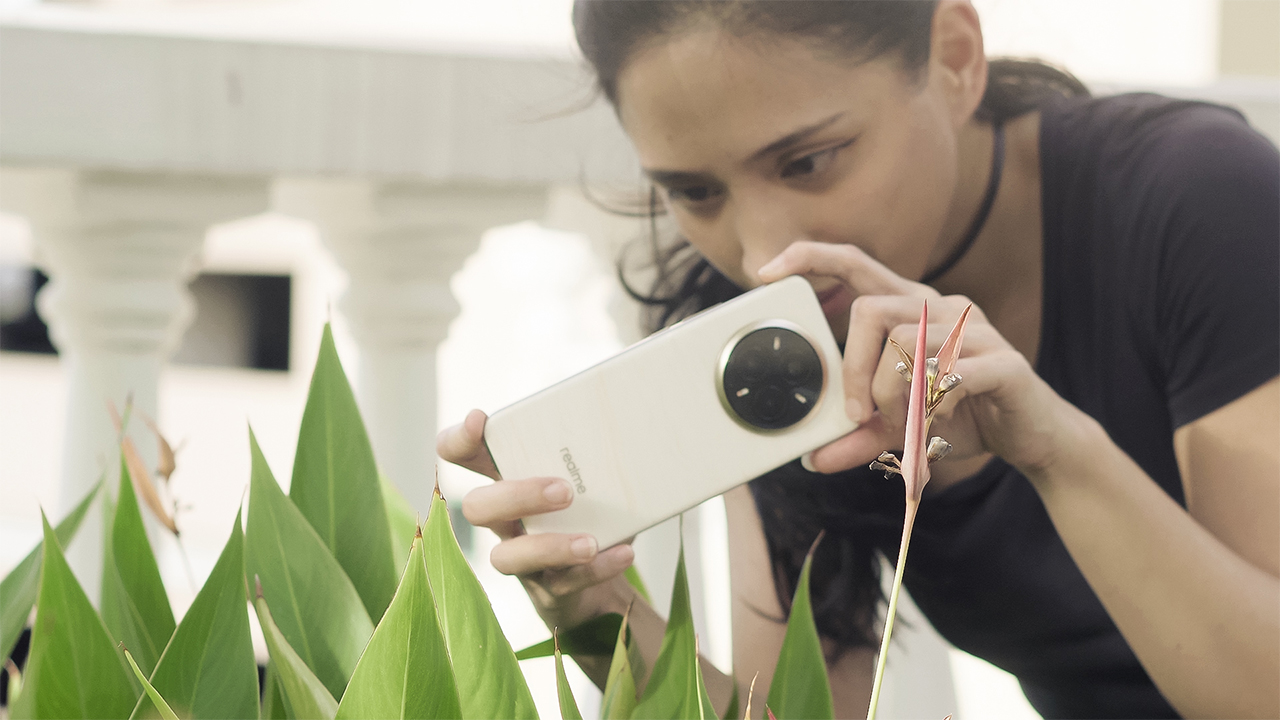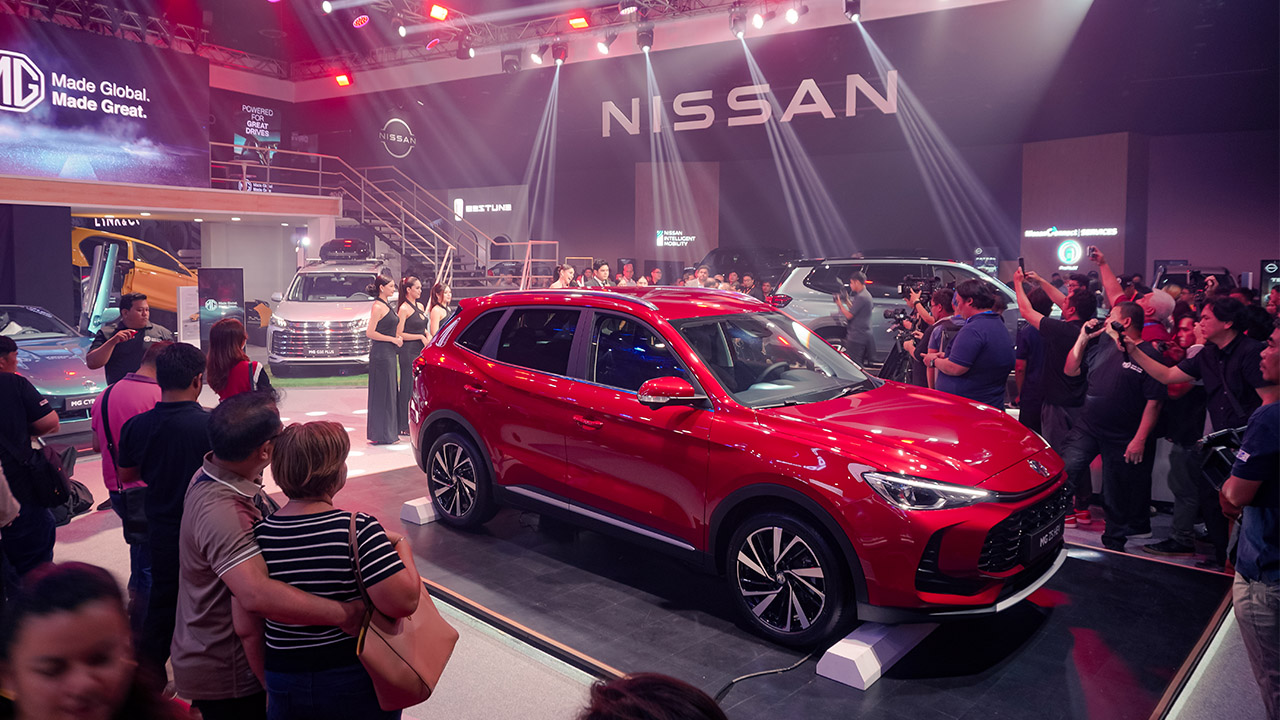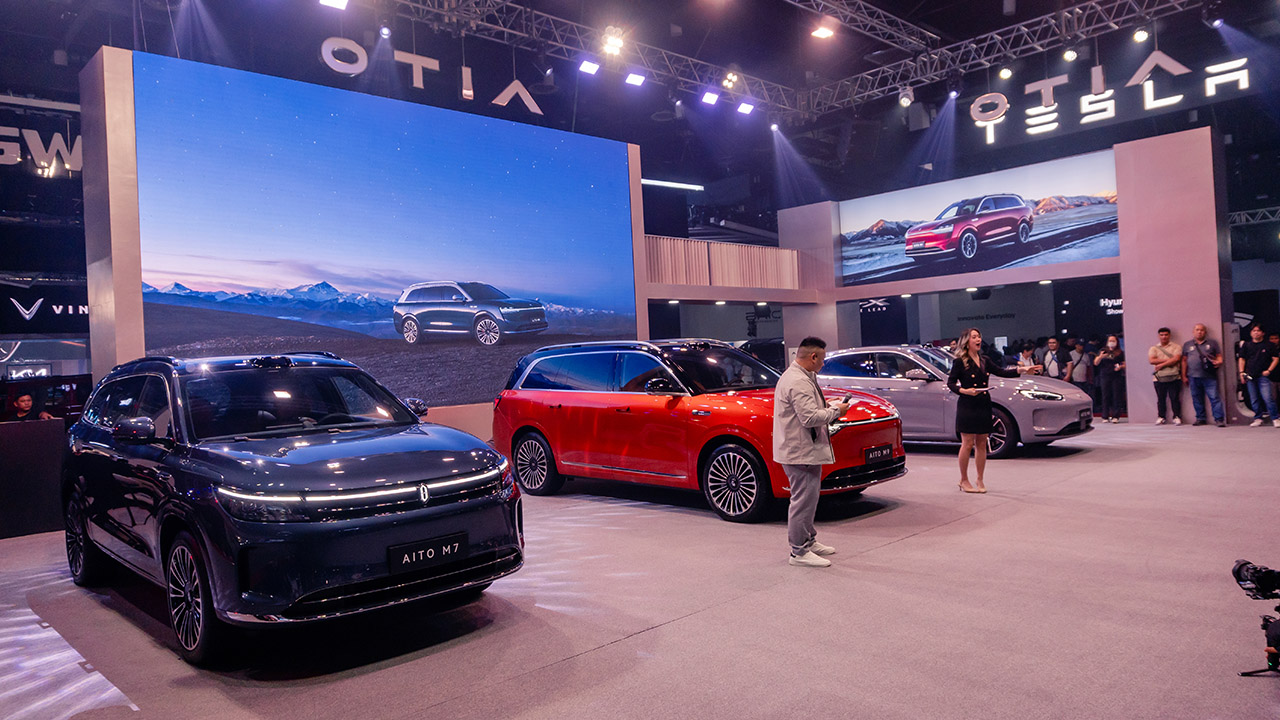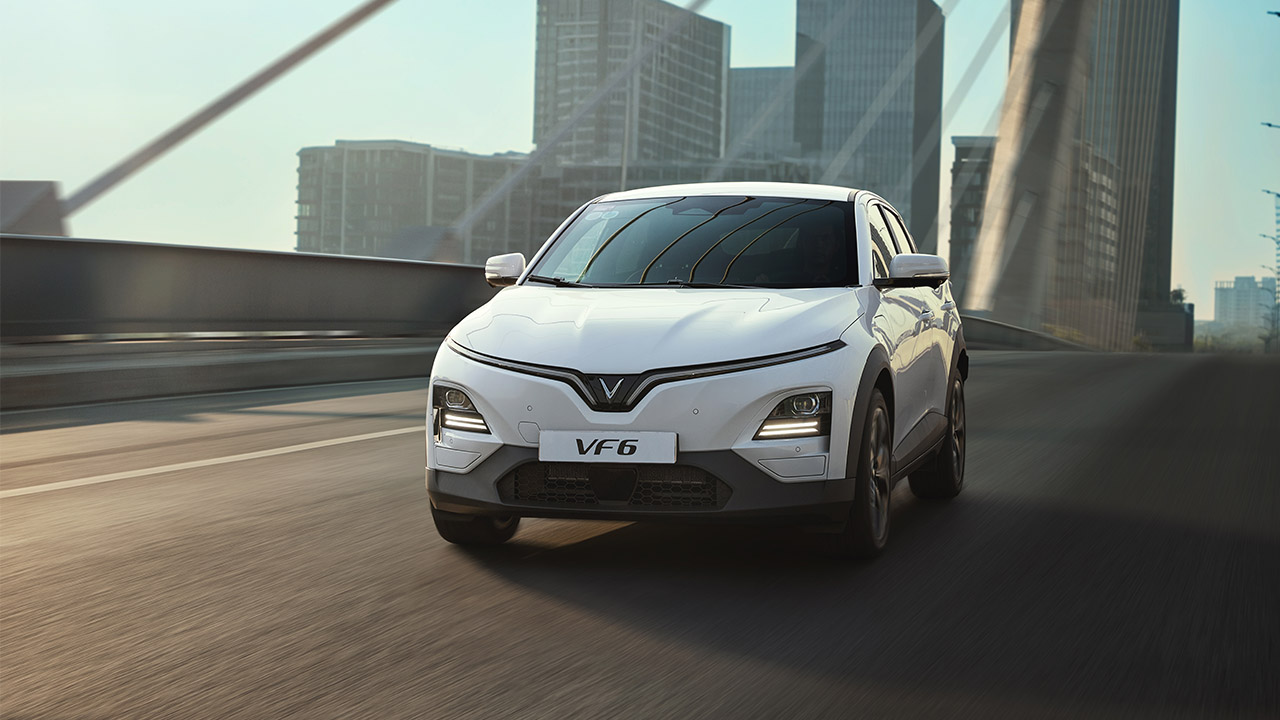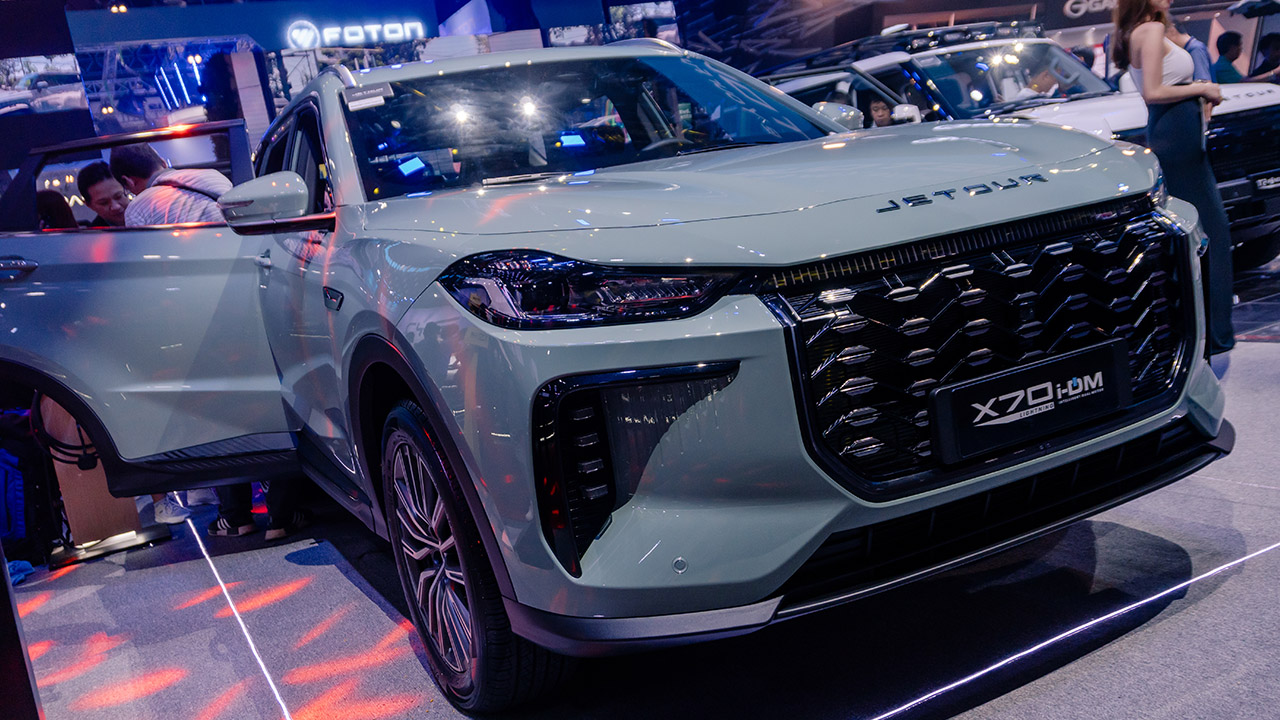You probably already know the key features of both phones so let’s just quickly do a rundown of both their offerings.
They both have the same 90Hz refresh rate, 4300mAh battery with 30W Flash Charge, Android 10 OS with realme UI, 4G connectivity, dual-SIM capabilities, splash resistance, placement of fingerprint sensor, USB port, speakers, and headphone jack, and screen resolution.
Design
So where do they differ? Well, the most noticeable would be the back panels’ designs. realme 6 has what the company calls a ‘Striking Comet’ look, while the 6 Pro has this ‘Lightning-inspired’ pattern.
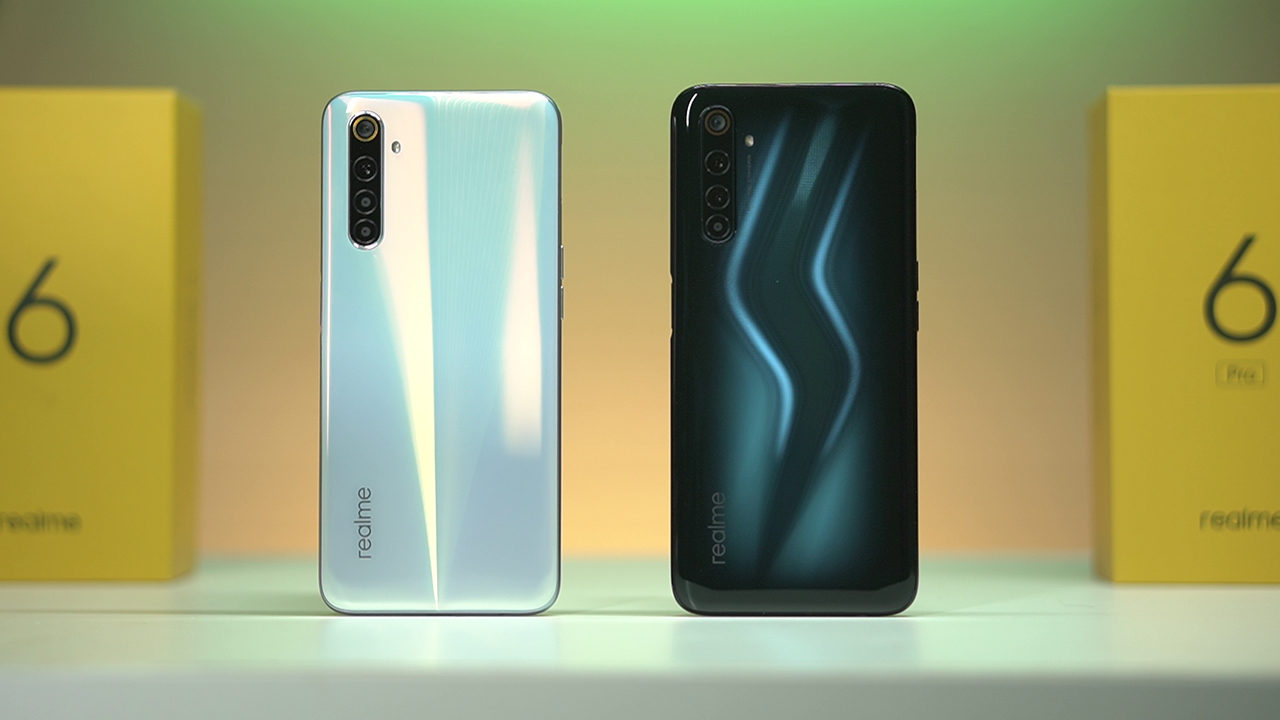
They both have their own appeal but I find the lightning design more eye-catching more so when you use it for shooting and the flashy pattern is just displayed for everyone to see. Meanwhile, my wife prefers the more subtle but elegant vibe the realme 6 has. And adding to the design, both have splash resistance for protection against liquids.
Another difference between the two is the display size. The realme 6 Pro is just a bit larger at 6.6 inches (vs 6’s 6.5-inch screen) but they do have the same Full HD+ resolution and 90Hz refresh rate for more fluid movements and transitions.
There’s Corning Gorilla Glass protection on these two devices but the 6 Pro has better reinforcement with the most recent offering (Gorilla Glass 3 vs Gorilla Glass 5).
Cameras
Though they both have the same quad-camera setup, only the 6 Pro comes with a 12-megapixel telephoto lens while the realme 6 goes for a 2-megapixel portrait camera for adding extra depth. The rest carry similar 64-megapixel main, 8-megapixel ultra-wide, and 2-megapixel macro shooters.
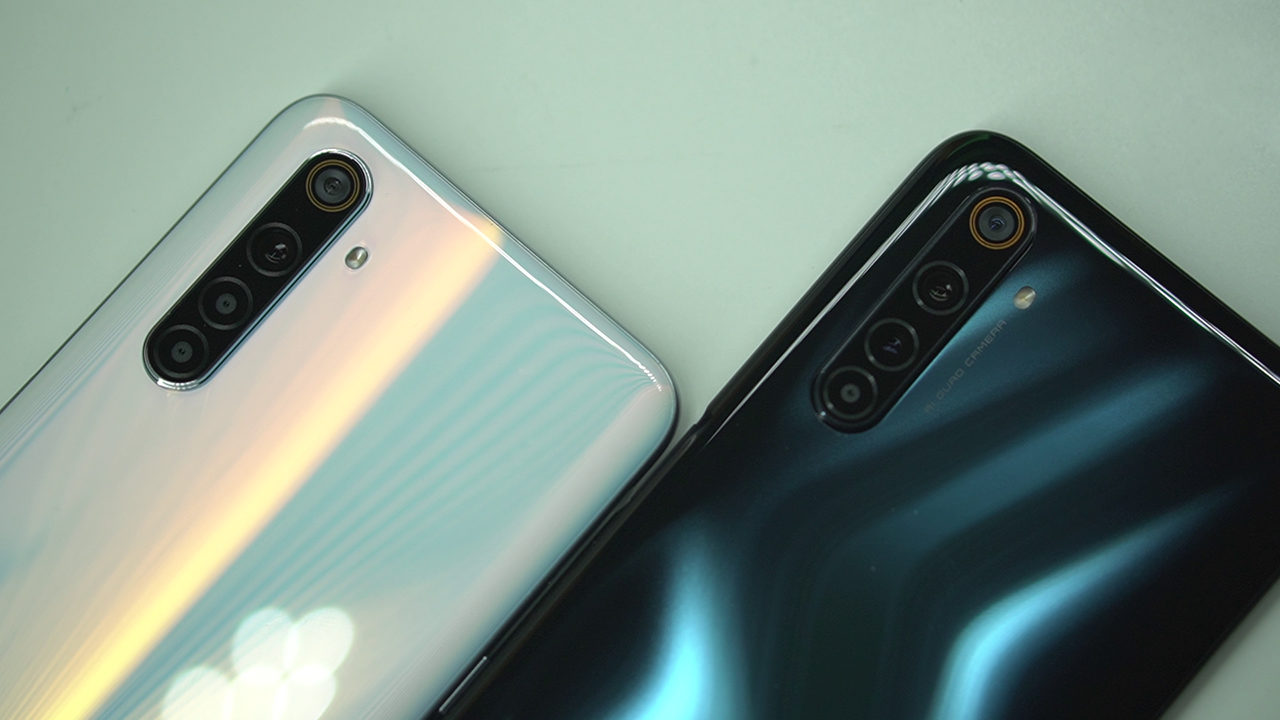
In general, the realme 6 takes decent shots with its main camera but compare it with the 6 Pro and you can see that its camera configuration produces better-looking shots than the standard realme 6. Additionally, when it comes to zooming in on subjects, there is a loss of quality for the realme 6 unlike the shots taken with a dedicated telephoto lens.
For Portrait mode, the realme 6’s dedicated depth sensor makes it possible for cleaner cutouts as compared to the 6 Pro with random jagged edges. These are just some things you notice when you really look at them side by side.
Shooting in Night Mode, the realme 6 Pro still takes the cake as it can produce clean shots of subjects using its Nightscape 3.0. The realme 6 also has a night mode, but not as effective as the 6 Pro’s.
As for selfies, you both get a 16-megapixel wide camera but the 6 Pro has an extra 8-megapixel ultra-wide sensor to fit more people and other subjects in. It does come in handy but the main sensor alone also does a good job for your regular selfies.
Apart from those, both phones have Pro Mode, Time Lapse, and Slow Mo that can shoot up to 240fps — one of The Modern Creatures’ favorite camera features!
Performance
Heading over to its internals, these two phones run on different platforms. The realme 6 sports a MediaTek Helio G90T processor while the 6 Pro carries a Snapdragon 720G CPU.
The 720G on the 6 Pro is made to further improve mobile gaming experience. So in addition to having better optics for photography and videography, the 6 Pro is also built to handle heavy games — and we’ve proven that during our review.
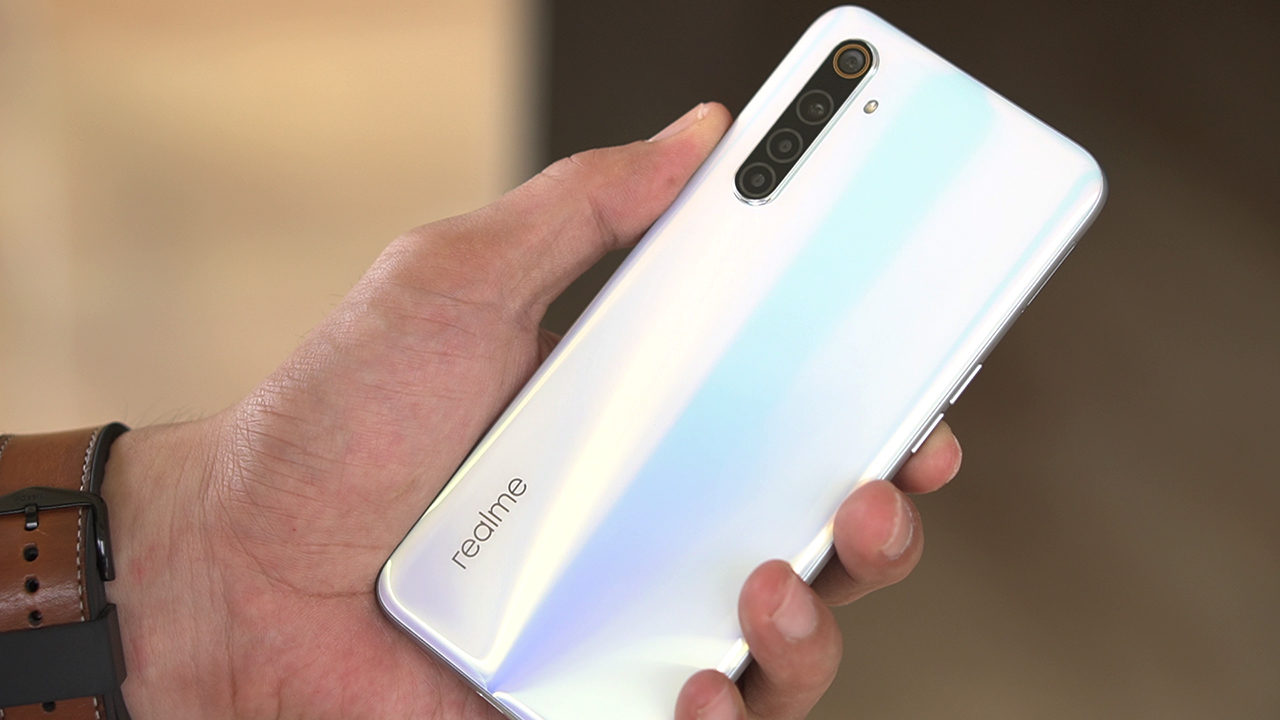
But that doesn’t mean the realme 6 underperforms while gaming. No, its Helio G90T is actually a tried and tested processor and also delivers impressive capabilities as an everyday phone.
We’ve played popular titles on it and it unsurprisingly handled Mobile Legends, Asphalt 9, and PUBG Mobile with ease.
For battery life, we previously mentioned the 6 Pro lasting up to eight hours of continuous gaming before we needed to charge it up. For the realme 6 and its same battery capacity, it fell short from the performance of its bigger sibling at just six hours and 22 minutes of play time.
But, with the promise of one hour charging time, the realme 6 took about five minutes faster to charge than the 6 Pro from 0-100%.
Conclusion
So what can we take away from this? Well, it’s evident that they’re alike in many ways but the Pro variant has certain specialties.
But if you’re just looking for a reliable phone that you can use as a daily driver, the realme 6 is more than enough. It has a fast charging time like the 6 Pro, almost the same quad-camera setup, and a processor powerful enough to handle gaming.

Although if you’re more particular with the shots you capture using a smartphone, definitely go for the 6 Pro. As we’ve mentioned in our review, it does go beyond the usual capabilities of a camera phone and offers more features to help achieve better footage.
Its battery life is also longer plus, only the 6 Pro has Dolby Atmos and Hi-Res audio. So those are some things to keep in mind.
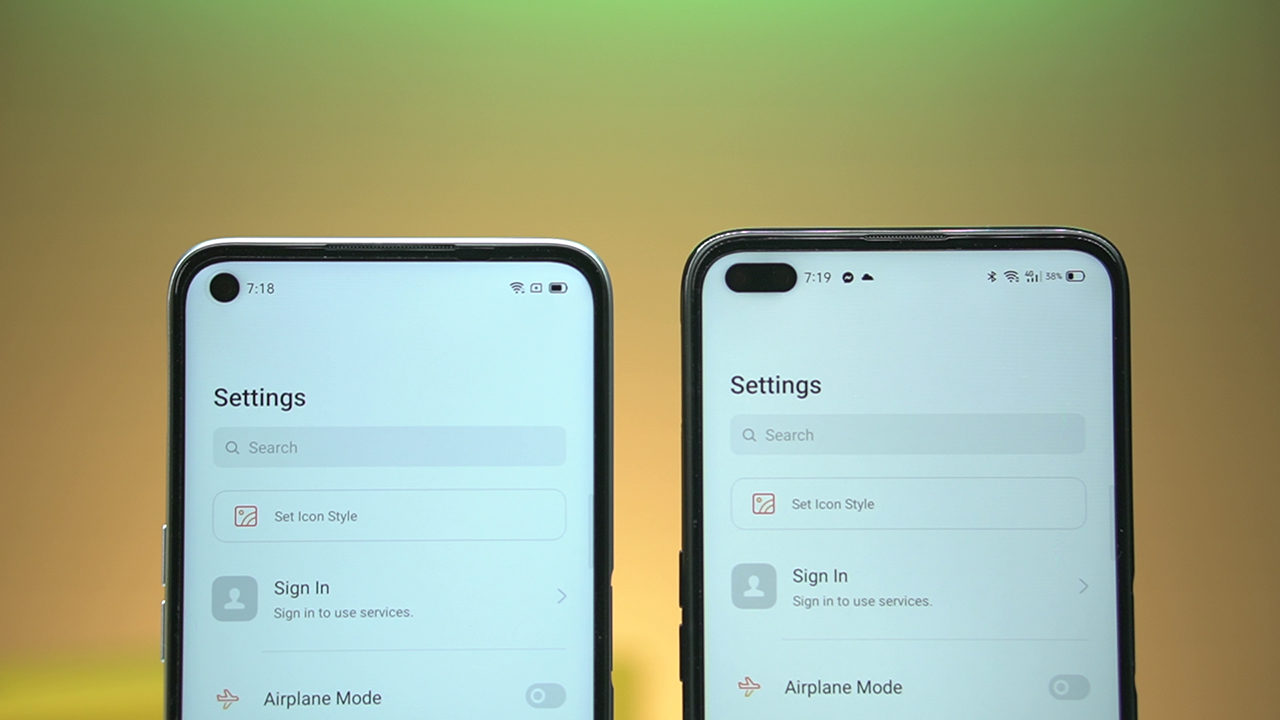
The decision-making process doesn’t simply end on what these phones can do. Pricing is, of course, a huge aspect when buying a new phone. So for the realme 6 Pro and all its extra features, you’d have to shell out PhP 16,990. While the realme 6 starts only at PhP 11,990 — that’s a PhP 5,000 difference and you still get a really capable phone.
There’s also a more expensive realme 6 with double the RAM at PhP 13,990 but still PhP 3,000 cheaper than the 6 Pro.
So all things considered, the realme 6 offers more bang for your buck. But, if you need those impressive low light images and that telephoto lens — and believe me, they do come in handy — then, by all means, go for the 6 Pro as it’s still a really good buy.

